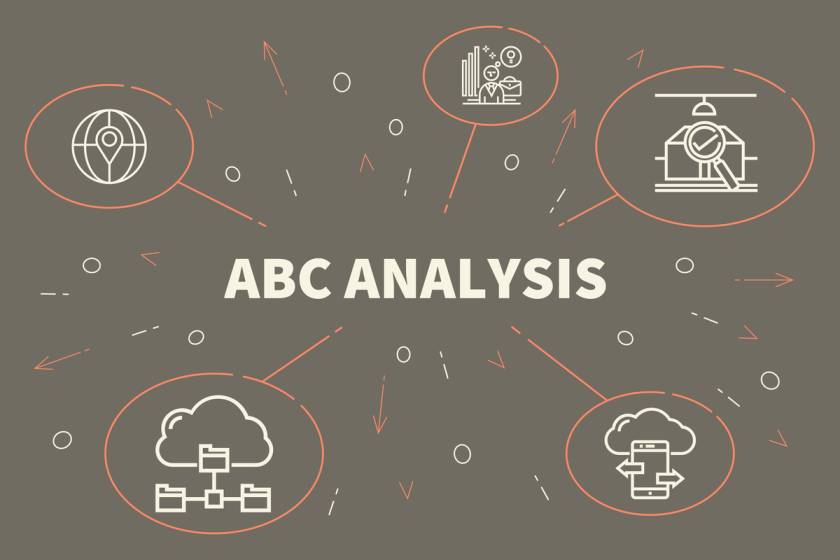10 Things You Need to Know About Inventory and How to Handle It



Owning a retail outlet or a boutique is a huge step for any designer. Ask any aspiring designer, and the first milestone that they think of in their career would be to own a studio or a retail outlet. Creating new designs and having a place to not just showcase but also to sell them to customers is a huge dream. Every designer has a plan and several ideas of how they want their dream store to function.
But there is one critical piece that almost never features in these plans! No one really includes managing clothes stock in their dreams for the future. However, come to think of it, can a clothing business – physical or online – function without this? The task of managing the clothes
stock may feel like drudgery, but there is no way of becoming successful without it.
10 Things About Inventory Handling
Inventory management is an essential part of managing any clothing business. So, instead of avoiding it as a boring, mundane task, why not understand it better and find ways to make inventory management easier? Here are 10 things one must know about inventory and how it can be managed easily.
1. What is inventory?

In the simplest terms, inventory is the stock of goods that a business carries. So, for a clothing business, it is the clothes stock that makes up the inventory. An important point to remember here is that clothes stock doesn’t mean only the finished clothes that are ready for sale. Clothing inventory covers a lot more than just finished pieces.
2. What are the different categories of inventory a clothing business can have?
It is easy to imagine that the items one puts up for sale form the inventory. However, that is just a part of the whole inventory. The different categories of inventory or clothes stock a business carries at any point in time is much more. Some of the most common categories are listed below.
- Raw Materials – The journey of any item in a collection starts from the raw material, and unless one is only re-selling finished dresses, they will be carrying a lot of raw materials like fabrics and embellishments. All these materials form a cost to the business and must be tracked carefully.
- Unfinished Goods – This is the next stage and also accounts for the inventory. The new design that one came up with maybe gets made into 3 different sizes. If all 3 are under production, they are still in inventory and must be tracked.
- Finished Goods – This is the most obvious component of the overall inventory. These are the ones ready for sale and are generally the only ones being tracked to some extent.
- In-transit Goods – This is mostly relevant for online businesses but can be important for brick-and-mortar businesses too. A dress that is on its way to the customer, whether already paid for or not, does cost a certain sum for the business and must be tracked.
- MRO Goods – An oft-neglected yet critical part of clothes stock for any clothing business. These include goods under maintenance, repair, and operating supplies. For a running business, at any time, there is a considerable inventory under this head which adds to the cost. Thus, accurate tracking of the MRO goods is essential.
These are the primary components of inventory in any clothing business. However, some other types may be considered, depending on the nature and status of the business. These include cycle inventory, anticipation inventory, and buffer inventory.
3. What is inventory management?
Knowing what forms the inventory is an essential first step of inventory management. As a process, inventory management can be defined as managing the entire life cycle of clothes stock, beginning from ordering, receiving, storing, utilizing, and ultimately selling the finished product. The same steps are relevant for damaged and returned clothes as well.
4. Why is inventory management needed?
When a business is dealing with physical products like the clothes stock for a clothing business, there are costs involved at every step. If one ends up carrying too much inventory, they end up paying for the additional stock, storing it as well as maintaining it. All this affects the cash flow of the business. On the other hand, if one carries less than the required clothes stock, they may risk losing potential sales and customers. This, in turn, affects the profits of the business. Thus, ensuring the correct supply of inventory at the right time and in the right quantities is critical. This is what inventory management is all about, making it an integral part of any business operation.
5. What are the different methods of inventory management?
There are several methods used for inventory management that have been developed over the years. Some of these include:
- First In First Out (FIFO) – A traditional method in which the goods produced first are sold first. This ensures all the previous stock keeps getting cleared.
- Last In First Out (LIFO) – A more popular method in the context of the clothing business, this ensures that the latest designs are sold first in keeping with the recent fashion trends. This method, however, leads to building up a huge backlog of unsold inventory.
- Just In Time (JIT) – An extremely modern concept, this ensures the clothes stock is prepared to be ready, just in time for sale.
6. What is ABC analysis?

The clothes stock of any business can generally be divided into 3 categories – A, B, and C. Category A are the products that are the most expensive and thus the slowest moving. But these are the ones that bring in the maximum profit. Category C is the least expensive and so the fastest-moving ones. Category B lies between A and C. These pieces are the ones that are moderately priced and move at a relatively fast pace. The analysis of the inventory to identify the category A, B, and C items is known as inventory analysis or ABC analysis.
7. When to reorder clothes stock?
There is a mathematical formula to identify the levels at which to reorder clothes. The level may differ for Category A, B, and C items. The reordering of Category A can be at comparatively lower levels since these aren’t fast-moving ones. On the other hand, Category C clothes must be reordered faster and at a higher frequency to keep up with their sales. An important factor to consider is the lead time for the clothes stock to arrive.
8. What are some problems to watch out for?
Inventory management may be intuitive for anyone running any business, but it also involves a lot of practical challenges.
- Incorrect entry record – If the clothes stock is being received by different staff members and each records the entry differently, there are going to be a lot of mismatches at the time of reconciliation. Thus, a uniform recording method must be established to ensure the correct entry of stock.
- Incomplete description – A description like “2 skirts” does not clarify whether it is red skirts that are available or 1 red and 1 green. Whether these are wrap-around skirts or mini-skirts is also not clear. Entering a detailed description can save a lot of time and effort in the long run.
9. What is the best way to manage inventory?
Inventory management can be done using paper and pen, an excel spreadsheet, a mobile app, or dedicated software. The best way to manage inventory for any business depends on the scale and budget of the business.
10. Who should be responsible for inventory management?
Some suppliers may offer to manage the inventory on behalf of the business. While it may be tempting to outsource the work, it is not a good idea. The best person to understand the requirements and accurately manage the inventory for a business is the business owner. If the scale is a little bigger, it is best to hire someone to manage this activity specifically. The little effort and cost help in saving a lot of cost and effort over a while.
If you are looking to find suppliers that help you smoothly run your fashion business, look no further than Fashinza. The vendor network on this end-to-end platform for the fashion industry is curated to ensure you do not have to worry about your manufacturing and suppliers and can concentrate on other aspects of the business.



















